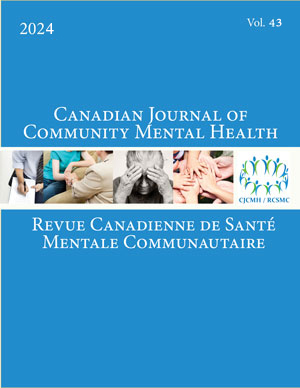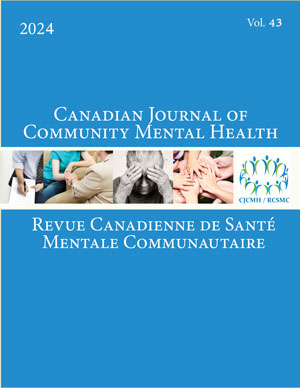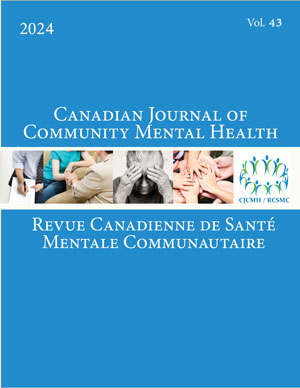Volume 3 • Number 2 • September 1984
OPEN ACCESS
This article traces training methods seen as “state of the art” from the 1950's to the present showing how the process has influenced the content and sometimes mistakenly become the content. It also shows how shifts in training practices have influenced the quality and focus of human service delivery programs. Special attention is given to the revolutionary changes in training practices from the lecture-discussion method to experiential training and the impact of T-group training, sensitivity training, and encounter group training. Present trends to modular packaged programs are described and a future movement to long range, integrated training based on the learning style of the human service worker is forecast. During the three decades described here there has been a major shift in training focus from reactive treatment to proactive prevention, influenced by changes in field practices. And recent tensions between training individuals and changing social systems in both service delivery and training are reflected in the education/training of human service workers.
OPEN ACCESS
Traditional rural communities are experiencing significant and, in some cases, drastic change. The stereotypical image of a rural community of prosperous farmers, vigorous small businesses, clean air and water and neat farmsteads is being severely challenged by today's economy, ecology and urbanization. This article will review some of the current statistics related to farm bankruptcies, farm accidents and stress related occupational harzards as a means of providing a background to some of the changes and challenges facing rural communities. An awareness of these issues will be related to some approaches that rural communities are taking in dealing with mental health. Three major components of this process will be examined: (1) the development and response of traditional as well as emerging rural organizations to the new demands being placed on them; (2) the changing role of adult educators and extension change agents in dealing with the new realities of rural living; and (3) the role of community development in an approach to comprehensive rural planning and the identification of problem areas. A case study of the University of Guelph's recently completed “Rural Development Outreach Project” will be presented as a means of relating how one educational institution became involved in helping several rural communities face the issue and realities of contemporary rural life. This case study will be related to new approaches to education and training for those interested in the “health” of rural communities.
OPEN ACCESS
The changing social, political and economic climate has brought about dramatic shifts in the public's demand for social services. While some people lapse into helplessness, more respond to rising levels of generalized anxiety and hostility by demanding a say in decisions that affect them. These developments are more readily appreciated against a review of the evolution of citizen participation. An important part of the new approach to training human service professionals is a mutual education process by which insights and competence is transferred between citizen leaders and social service professionals so that both will be more effective. A special application of citizen participation can be used when organizational downsizing is forced by budget cuts affecting government agencies and voluntary associations. A crative and pro-active approach to the organization's publics can enable it to do more with less and even improve the quality of its services.
OPEN ACCESS
Organizations in crisis cope with and adapt to their environments by unwittingly exhibiting certain typical responses. These responses adversely affect organizational members and create secondary crises. Human service professionals working in and with organizations during “hard times” need new skills and methodologies that include no-growth situations and high anxiety states. We need to be developing new types of training programs to meet the challenges of working with present day organizational realities.
OPEN ACCESS
It is neither useful nor productive to categorize people in business according to their gender, since most categories tend to create dysfunctional blocks which are highly visible in organizational affirmative action programs. Most women have been led to accept that men were here first. Now women who want “equality,” “affirmation,” and financial mobility are faced with reeducating both themselves and other women in redefining their relationships with those who have the power to affirm. This article addresses the interim survival strategies that women training women must learn if they are to be able to empower each other through the transition from being protesters to effective team players; if they are to be able to trade a victim identity for a competency-based identity; and if they are to be able to move from unrealistic, grandiose goals to systematic and strategic rist-taking that will pay off in the future.
OPEN ACCESS
Between preschool years and adolescence, social life among peers requires different skills (cognitive, emotional and behavioral). Promoting the adequate skills according to age levels may lead to social adjustment, which is a mental health core dimension. Furthermore, it may lead to improved academic achievement. Many social skills training programs from varied orientations have been implemented: the main characteristics of a few of them are presented, followed by a discussion concerning conditions that could facilitate the implementation of such a program and its effects.
OPEN ACCESS
The training of peer counselors and family life educators has shifted from a medical-biological orientation to the social sciences. In the process the related curriculum has developed from “the facts of life” to the concerns of everyday living. And, the teaching has changed from information giving lectures in a telling style of teaching to an experiential format in a participative, student-centered style of teaching. Important milestones during the past three decades are described to indicate the trend leading to the use of human sexuality education as a vehicle for personal growth and self actualization.
OPEN ACCESS
Improving the quality of work life in order to reduce alienation, anomie, physical and mental stress has been a focus of human service professionals for many decades. In the past twenty years much of this work has been in Quality of Work Life and Quality Circles (Theory Z) designed to increase worker participation. These efforts have centered around increasing the participation and involvement of lower level employees in decisions that affect their daily working lives. This paper takes the position that good training is not enough. If employee participation is to really take hold, it must be supported by appropriate organizational structures and procedures. Human service professionals who want to increase their influence on organizations must augment their knowledge and skills in social relations with an understanding of organization theory and design. The paper concludes by suggesting directions for the 1980s, pointing out the need for techno-structural intervention strategies and highlighting potential entry levers for those concerned with improving the quality of work life in organizations.
OPEN ACCESS
In this article a learning model is presented to give perspective on the use of technology in education and training. Individual learning styles and levels of intellectual development are reviewed as an added variable in the teaching-learning situation. The microchip appears to be revolutionizing our communication technology and presenting new opportunities and problems for educators in the human services. The role of personal microcomputers, Telidon and other electronic systems are discussed and their implications for adult education and training developed. How the training of others to use this new technology is also described.










